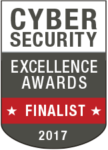Photo Gallery
 |
Adaptive Data Loss Prevention

Additional Info
| Company | Clearswift |
| Company size | 150 (Announced acquisition intent by RUAG - 7,500 employees) employees |
| Website | https://www.clearswift.com/ |
NOMINATION HIGHLIGHTS
Adaptive DLP offers a game-changing, non-disruptive approach to protecting the unauthorized disclosure of confidential data wherever it lives – at the endpoint, on premise or in the cloud. Providing unmatched level of inspection and sanitization of the digital activity entering and leaving the organization by completely dissembling the content into its constituent parts and automatically applying the appropriate level of security (e.g. sanitize, redact, block, delete, encrypt, etc.). Leveraging a surgical approach to cyber security, Adaptive DLP can remove only the malicious code or confidential data without the disrupting delays and quarantines. A bi-directional level of protection that can be deployed without a rip and replace of the existing security infrastructure and cost 2 to 3 less than what is available in the market.
Deep content inspection that leverages recursive decomposition and true file analysis detects confidential data by completely dissembling digital. Unparalleled in the industry, Clearswift’s deep content inspection is not limited by zip/encryption, file size, analysis timing delays or multiple embedded document layers.
Unique data redaction (bi-directional) – Enables compliance with regulations such as PCI, HIPAA and GDPR without disruption.
Document sanitization – Ensures consistent removal of metadata and leaks of hidden data, while preventing information harvesting and phishing attacks.
Distributed review and release to direct business managers for in-context approvals and well needed relief of administration on IT departments.
Prevent false positives – The absolute showstopper for a number of organizations that deployed traditional DLP. In fact, they have been known to be so disruptive and overwhelming that organizations significantly scaled back their initial deployment or designated it to shelf-ware status. Adaptive DLP’s ability to redact only the sensitive data that breaks policy allows the rest of the communication or web sharing of information to continue and all but eliminates false positives.
How we are different
• World’s first adaptive data loss prevention solution - Clearswift is redefining the DLP industry bringing game-changing innovations with its unique and non-disruptive approach to critical information protection at time when data security is critical. Growing over 82% year-over-year, Clearswift’s Adaptive DLP offers accessible solution for organizations of all sizes, not simply for the larger organization that has the resources and budget to manage the complexity with older, traditional DLP solutions. Adaptive DLP is hot technology getting the attention of media and analysts (recognized by Gartner on Enterprise DLP Magic Quadrant), winner of top “CEO World Award,” including replacing point-solution DLP vendors in top vendors to consider on key comparison reports.
• Cost-effective for all size organizations - Often 2 to 3 times less expensive than the high-price tag and extensive service fees associated with traditional DLP, Adaptive DLP also helps organizations reduce costs associated with managing false positives, distributed reviews and releases to direct supervisors and the need to purchase multiple security tools (i.e. Anti-malware, legal redaction and sanitization, PCI compliance, etc.).
• Ease of use - Traditional DLP solutions were designed for larger organizations with extensive IT resources and budgets to manage the complex deployments and maintenance headaches (i.e. tremendous false positives, quarantines reviews and releases, etc.) known to be common with outdated and heavy-handed data loss prevention approaches. Designed to be straightforward, agile, the next generation of Adaptive DLP solutions has now made critical information protection practical for organizations that are faced with limited IT resources, are moving more of their operations to the cloud and mobile applications, and face more complex cyber threats and compliance regulations (PCI, HIPAA, FERPA, GLBA, etc).

Vote by Sharing
- Like
- Digg
- Tumblr
- VKontakte
- Buffer
- Love This
- Odnoklassniki
- Meneame
- Blogger
- Amazon
- Yahoo Mail
- Gmail
- AOL
- Newsvine
- HackerNews
- Evernote
- MySpace
- Mail.ru
- Viadeo
- Line
- Comments
- SMS
- Viber
- Telegram
- Subscribe
- Facebook Messenger
- Kakao
- LiveJournal
- Yammer
- Edgar
- Fintel
- Mix
- Instapaper
- Copy Link
Each completed social share counts as a vote for this award nomination.



